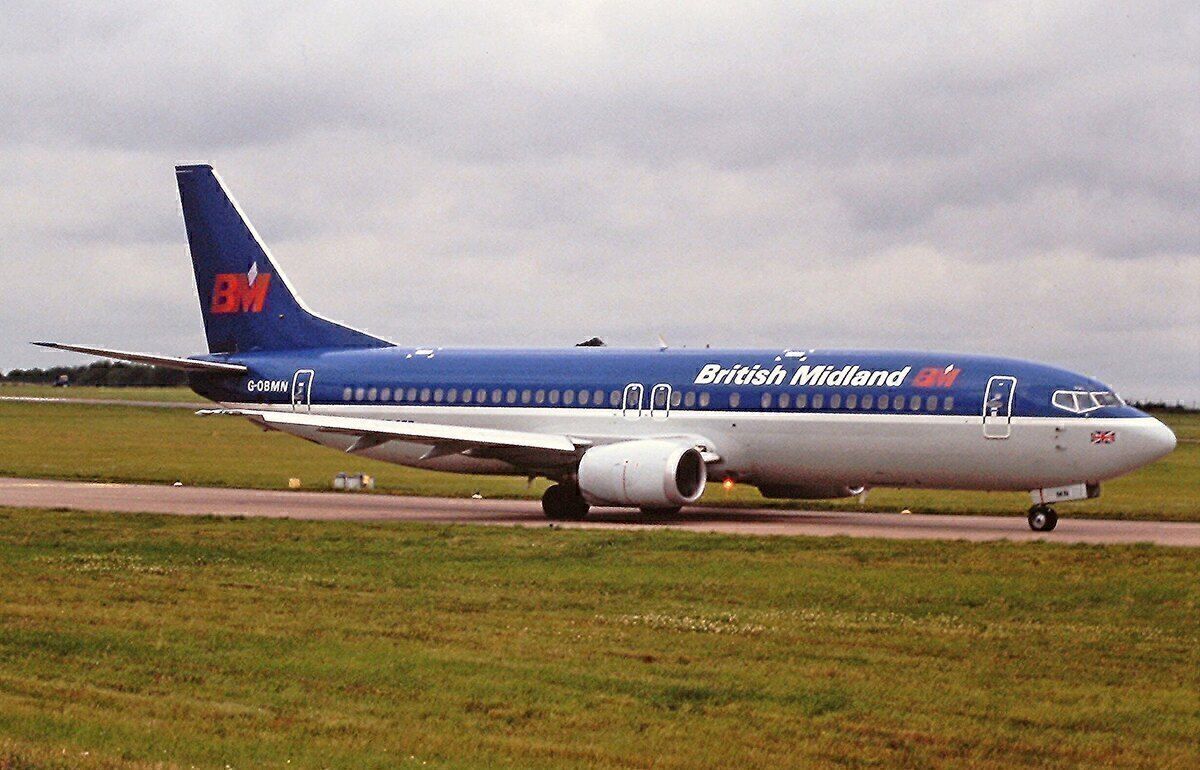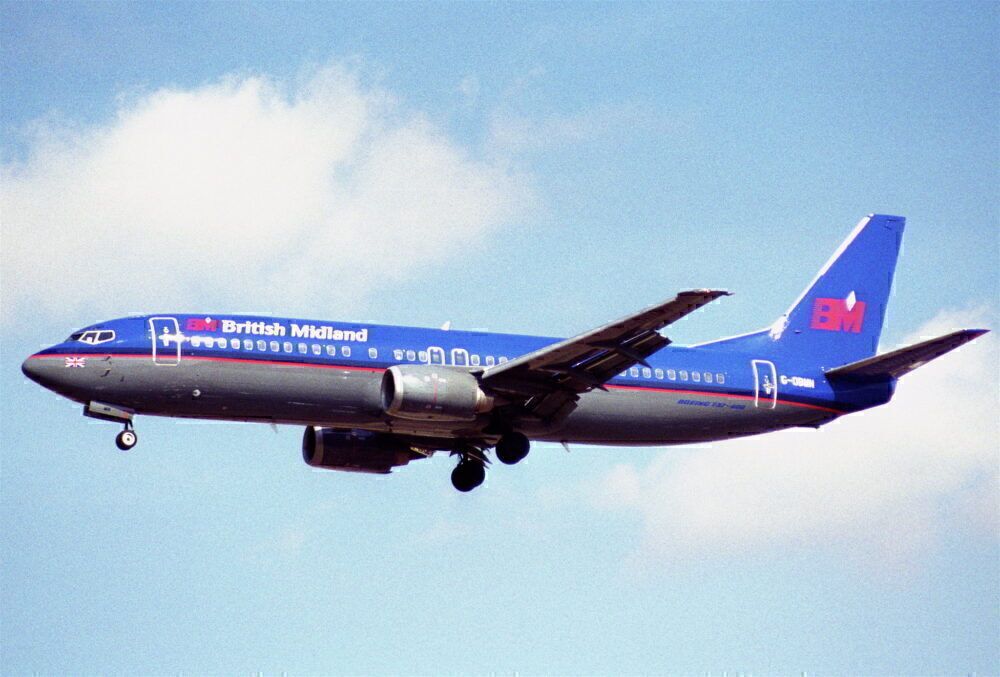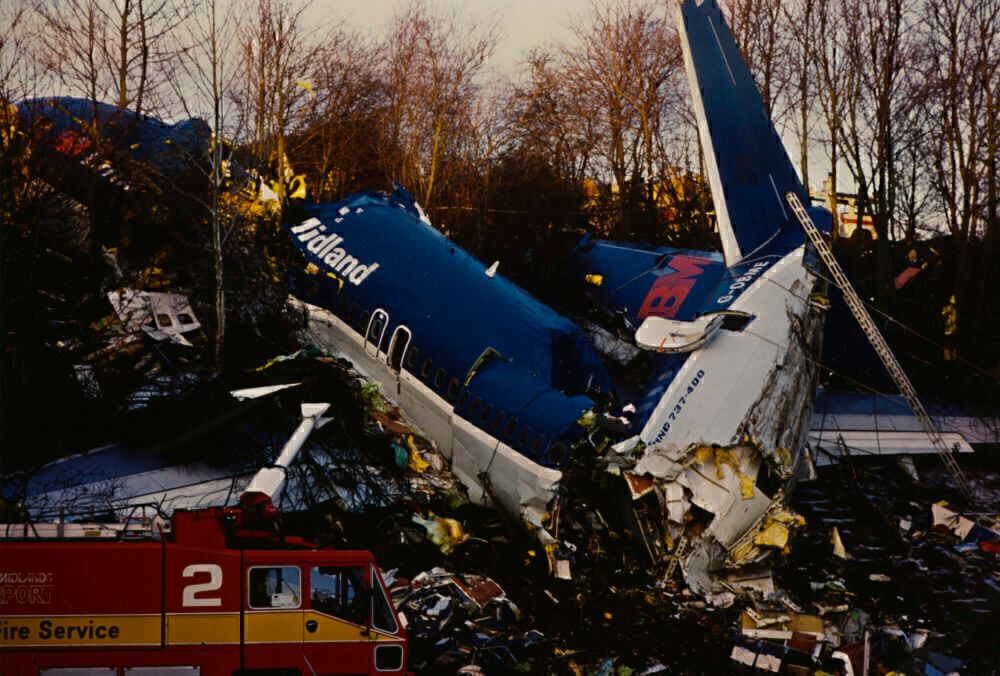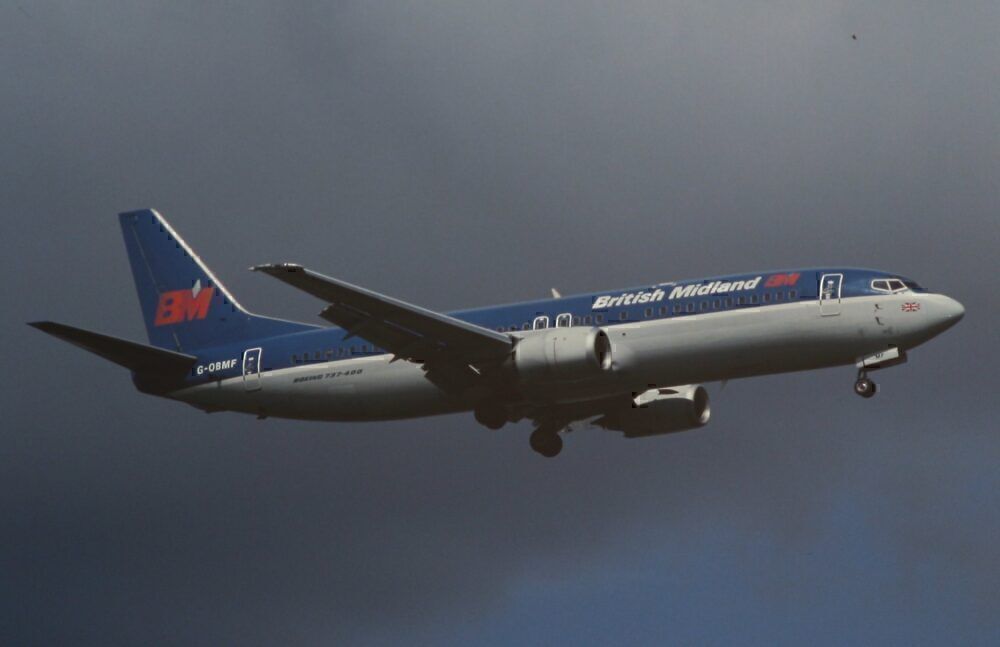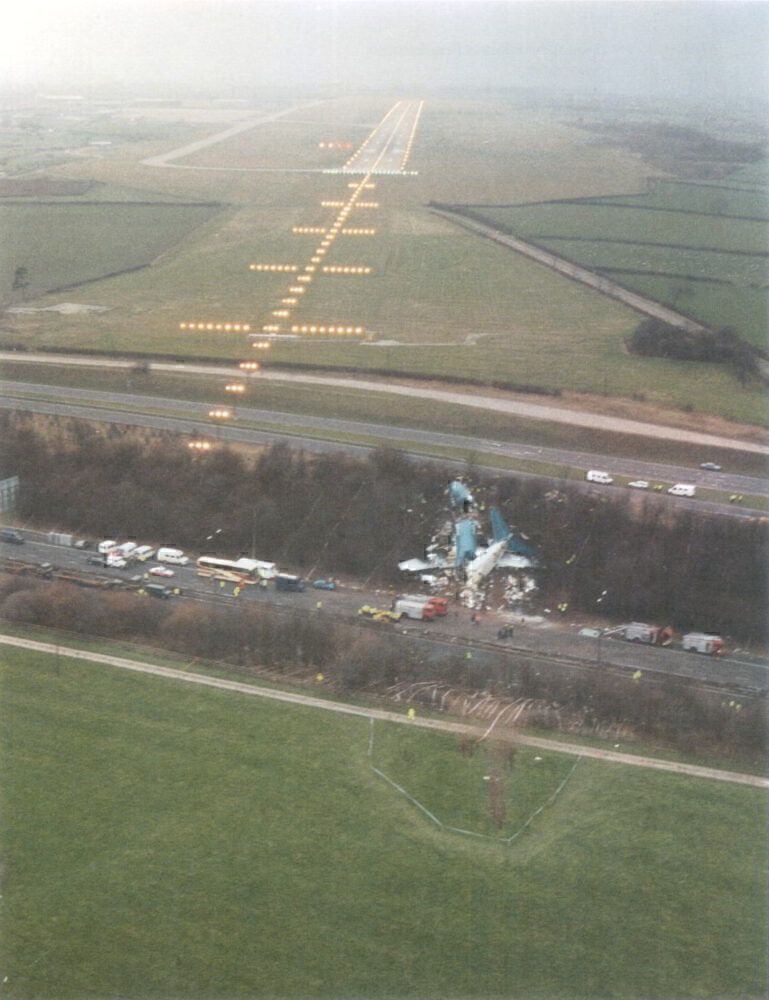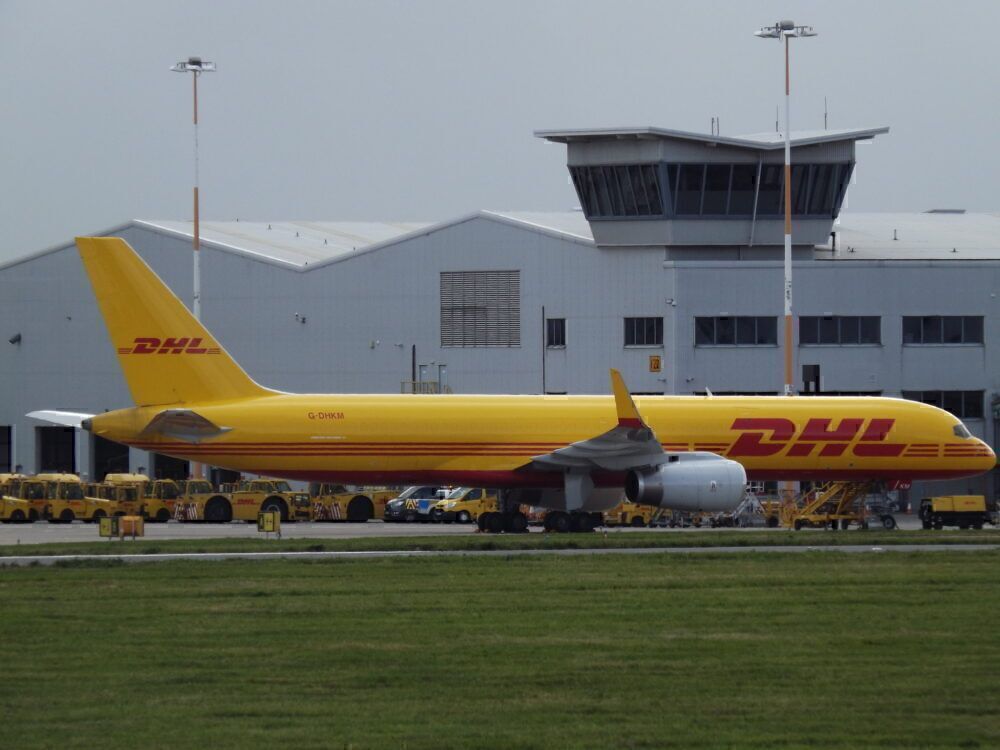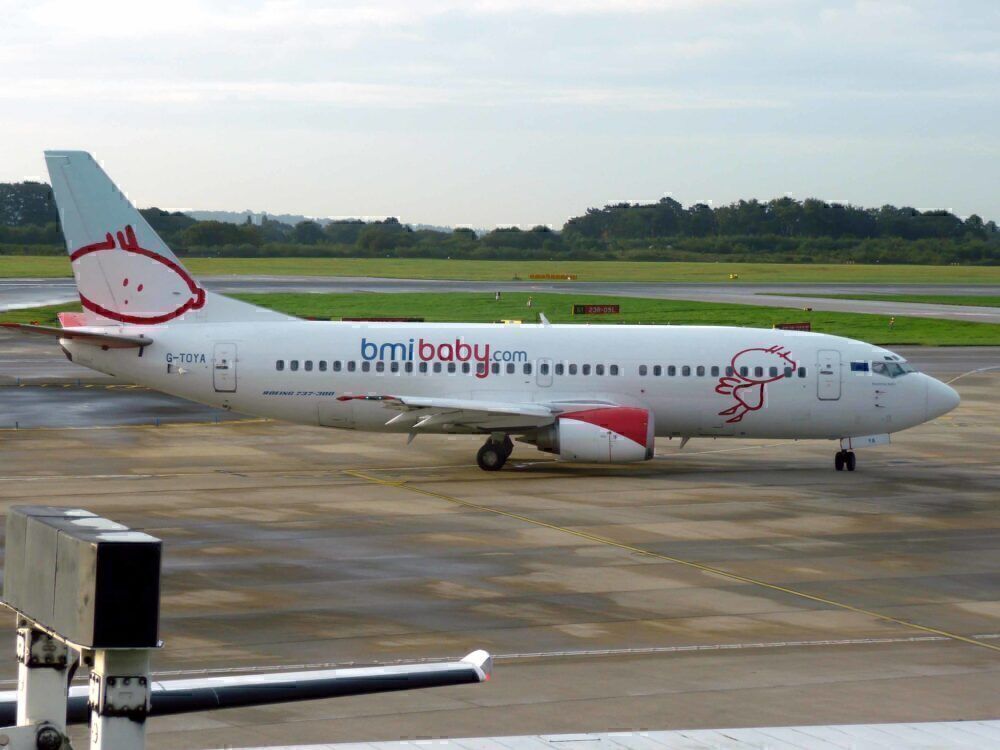Yesterday marked 32 years since the crash of British Midland flight 92 at East Midlands Airport in Leicestershire, UK. Operated by a Boeing 737-400, the accident, known as the Kegworth Air Disaster, occurred during an attempted emergency landing. But what have we learned in the intervening time since this tragedy?
A detached fan blade
British Midland flight 92 was a scheduled service from London Heathrow (LHR) to Belfast International Airport (BFS). On January 8th, 1989, it was operated by a Boeing 737-400 that had already made one round-trip to Northern Ireland's capital and largest city that day. Its pilots had a combined total of around 16,500 flight hours, including approximately 1,000 in the 737. There were a total of 118 passengers and eight crew members onboard.
The flight departed Heathrow at 19:52 local time, and began climbing towards its intended cruising altitude of 35,000 feet. However, when passing through 28,000 feet, one of the left-hand engine's fan blades detached. This resulted in significant, tangible vibrations, as well as a sudden, audible pounding noise. Passengers seated towards the rear of the aircraft also noticed sparks and smoke emanating from the left-hand engine.
Stay informed: Sign up for our daily aviation news digest.
Passengers in the cabin then became aware of a burning smell. This was accompanied by smoke, which entered the cabin through the aircraft's ventilation system. As a result, the crew consulted with British Midland's operations department. It suggested that they divert to East Midlands Airport (EMA), in Leicestershire.
Crash landing
While on final approach to East Midlands, a fire in the damaged left-hand engine caused it to cease operating altogether. With the aircraft losing speed, its ground proximity warning system (GPWS) issued several 'glideslope' warnings. Flying at just 185 km/h (115 mph), the aircraft did not have sufficient speed to restart the engine.
As such, the aircraft's tail and landing gear struck the ground near the M1 motorway at 20:24 local time. It then bounced back into the air, eventually crashing on the motorway's far embankment shortly afterward. The aircraft broke up into three sections on impact, having come to a stop almost 500 meters short of the runway.
With the accident's proximity to one of the UK's busiest motorways, it could have also caused injury and death to road users. However, miraculously, there were no cars on the motorway in the aircraft's vicinity at the time of its crash.
Nonetheless, the crash became one of the UK's deadliest air disasters, with 39 passengers initially perishing due to the crash. A further eight later succumbed to their injuries, resulting in a total death toll of 47. All eight crew members were among the disaster's 79 survivors. 74 of these suffered serious injuries in the crash, with the remaining five (and five firefighters involved in the rescue operation) suffering minor injuries. The crash is, to date, the last major fatal accident involving a UK airline.
Results of the investigation
The investigation into the disaster found human error to be a principal cause of the crash. The faulty fan blade had detached from the left-hand engine. However, the flight's captain elected to shut down the right-hand powerplant. The right-hand engine in previous 737 variants supplied air for the cabin's air conditioning. As there were reports of smoke in the cabin, the decision was taken to shut down the engine that the crew believed corresponded to this airflow.
However, on the 737-400, Boeing had redesigned the air conditioning to utilize bleed air from both engines. Passengers and crew in the cabin could see that it was the left engine that was at fault. However, such information was not passed on to the cockpit, as the cabin crew assumed that the pilots were aware of the malfunction.
The crew attempted to increase thrust on their approach to East Midlands. However, their misunderstanding ultimately meant that they did so to the faulty left-hand engine, rather than the working (but shut-down) right-hand powerplant. This led to the engine fire that caused it to cease operating entirely. This loss of power at a critical stage of the approach ultimately led to the crash of British Midland flight 92.
The report into the accident resulted in several safety recommendations. These changes have since gone on to make commercial aviation safer. According to The Independent, revisions to the 737-400's flight manual were made, along with improved coordination between the cabin crew and the flight deck. Passenger safety briefings, particularly regarding the importance of the 'brace' position, were also revolutionized due to the disaster.
The aircraft involved
According to Planespotters.net, the aircraft involved was almost brand new at the time of the disaster. Registered as G-OBME, it took its first flight on October 6th, 1988, having been produced at Boeing's factory in Renton, Washington. It was the first of eight 737-400s to be acquired by British Midland, with the last, G-SFBH, arriving in May 1997. It was fitted with French-American CFM International CFM56 turbofan engines.
Delivery to British Midland followed just nine days later, with the aircraft configured with a 156-seat all-economy layout. As such, G-OBME had been with the airline for less than three months at the time of the crash. Unsurprisingly, it had to be written off due to the damage that it incurred due to the disaster. It had accumulated just 521 airframe hours.
British Midland thereafter
British Midland rebranded as BMI in 2001. This was the same year that it received its first widebody aircraft, an Airbus A330-200. The following year, it founded a low-cost subsidiary, known as Bmibaby. However, over the next decade, BMI began making heavy losses.
Despite restructuring following a takeover by German flag carrier Lufthansa in 2009, these had reached £100 million per year by 2012. BMI ceased operations in October that year, having been integrated into British Airways. Its last flight was on October 27th, 2012, with Bmibaby having already ceased operations the previous month. BMI Regional continued operating and rebranded as flybmi in 2018. However, this airline also collapsed in 2019.
Can you remember first hearing about the Kegworth Air Disaster? Did you ever fly with British Midland? Let us know your thoughts and experiences in the comments.

